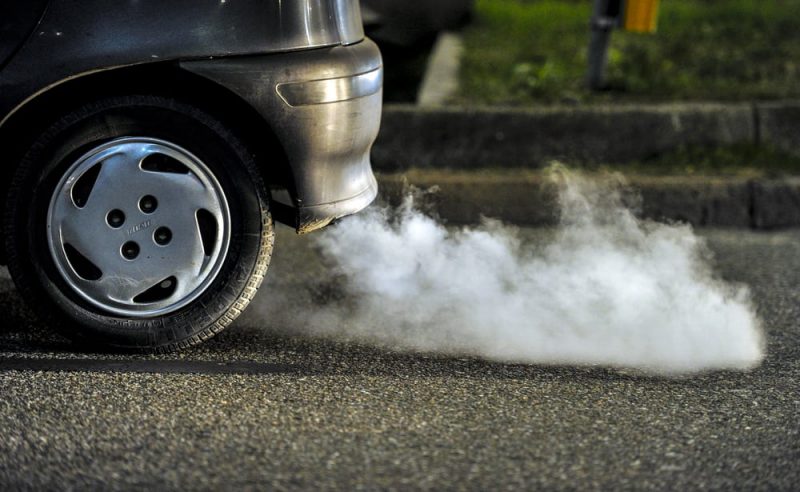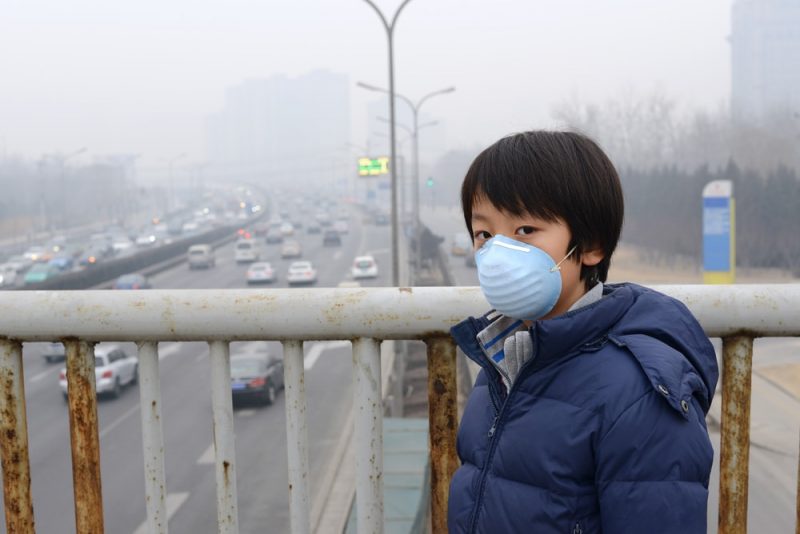The toxic gases They are substances of a fickle and ethereal nature, whose interaction with the human body is irritating, harmful or lethal. Many are the product of primary chemical reactions, voluntary or not, and are also usually flammable, oxidizing or corrosive, so their handling requires special care. For instance: pepper spray, ozone, cyanide.
According to their effect on the body, they can be:
- They are not usually toxic but they cause serious damage and even death, as they displace the oxygen we breathe and take its place.
- When they are breathed in, they dissolve in the water present in the mucous membranes of the airways, and generate acid or alkaline radicals, due to which they cause inflammation.
- They have properties of the two types of gases above.
Examples of toxic gases

- Carbon monoxide (CO). One of the most toxic forms of carbon oxidation is a colorless gas capable of causing death when inhaled in large quantities. It is a common gas in the industrial world: it is the result of the combustion reaction in combustion engines and the burning of hydrocarbons and other organic substances.
- Sulfur dioxide (SW2). It is an irritating, colorless gas, with a very particular odor and soluble in water, which becomes acid (This reaction takes place in polluted atmospheres and produces acid rain). It is usually released as a product of industrial combustion, despite the fact that in contact with the respiratory system it causes severe irritation and bronchitis.
- Mustard gas. It is a family of highly irritating chemicals used as weapons of war (for the first time in 1915, in the First World War). It can be treated in two different ways: nitrogen mustards or sulfur mustards. Contact with them causes blisters and ulcerations on the skin or mucous membranes and eventually leads to agonizing asphyxia.
- Pepper spray. Also known as tear gas, it is capable of producing moderate and painful irritation of the ocular and respiratory mucosa, and even temporary blindness. It is used as a personal defense mechanism or in the dispersal of demonstrations.
- Lewisite. It is a highly toxic synthetic chemical that was developed by the North American war industry during the First and Second World Wars. When inhaled, it causes painful burning, coughing, vomiting, runny nose and pulmonary edema.
- Ozone. This gas is naturally found in the atmosphere, where it shields us from solar radiation. It is rare in the everyday environment. Exposure to ozone generates irritation in the respiratory system and inflammatory bronchial responses. In high concentrations it can cause cyanosis, extreme fatigue and kidney failure.
- Methane (CH4). The simplest alkane hydrocarbon that exists is a combustible and potentially asphyxiating gas, colorless, odorless, insoluble in water. In high concentrations it can suffocate by displacing oxygen from the environment.
- Butane (C4H10). It is a highly flammable and volatile hydrocarbon, which is usually handled domestically and with the addition of odorant markers to detect its leaks (since it is odorless). It is potentially suffocating. It produces drowsiness, hallucinations and loss of consciousness when inhaled.
- Fire fumes. They are also known as mixed gases, as they contain various combinations of irritating and suffocating gases, depending on the nature of the materials consumed in the fire. They are the main cause of death in fires, due to their wide effects on the body: suffocation, severe irritation, necrosis, cyanosis, etc.
- Cyanide (CN–). It is one of the most toxic substances known and with the most immediate lethal effect. In its gaseous form, it has a characteristic odor (similar to chestnuts), whose detection margin is very close to lethal. Its immediate effects inhibit cellular respiration and often lead to cardiorespiratory arrest.
- Diatomic chlorine (Cl2). Known as dichloro, it is a greenish-yellow gas, with a strong and unpleasant odor and very high toxicity. It was used as a weapon of war in the First World War, due to its pneumotoxic effects in medium concentrations. It is used in the chemical and materials industry, as well as in certain household solvents.
- Nitrogen oxides (I) (N2OR). Also called laughing gas, it is colorless, sweet-smelling, and slightly toxic. It is neither flammable nor explosive, and is often used for pharmaceutical and anesthetic purposes. It has an important contribution to the greenhouse effect and, therefore, to global warming.
- Phosgene (COCl2). It is a poisonous gas, used as a pesticide and input in the plastics industry. It can be colorless or take the shape of a white or yellow cloud. It is not found naturally anywhere, it is not flammable, and it has an unpleasant odor. It is highly irritating and suffocating.
- Ammonia (NH3). Also called ammonium gas, it is colorless and has a very unpleasant and characteristic odor. It is widely used in various human industries, despite being caustic and highly polluting. The human body is able to process it through the Urea Cycle and expel it in the urine, but in reaction with other compounds it is highly toxic and flammable.
- Helium (He). It is a monatomic gas that has many of the properties of noble gases, it is colorless, odorless and very abundant since stellar reactions produce it from hydrogen. When inhaled, it modifies the speed of sound propagation, which results in high-pitched and rapid voices, but too much concentration can replace oxygen and cause suffocation.
- Argon (Ar). It is one of the noble gases, colorless and inert, little reactive and little conductor of heat, widely used in the electrical industry. It is a simple asphyxiant, whose toxicity depends on the decrease in oxygen in the environment, so it requires high concentrations for it.
- Formaldehyde (CH2OR). It is a colorless gas with a very pungent odor. Its solution in 40% water is called formaldehyde, and it is used to preserve biological specimens. It is a known carcinogen and irritant to the respiratory system.
- Fluorine (F). It is the most electronegative and reactive of all the elements, it composes a pale yellow gas with a pungent odor (F2). It has a high affinity for zinc and iodine. Zinc is essential for the functioning of memory, learning and the generation of antibodies. On the other hand, iodine is important for the thyroid and hormonal regulation of the body. Fluorine reduces the role of these two elements in the body by joining them.
- Acrolein (C3H4OR). Although it is a liquid in its natural state, it is highly flammable and evaporates rapidly when heated, producing a gas that irritates the respiratory system, the toxic effects of which have not been well studied, but point to moderate lung damage.
- Carbon dioxide (CO2). It is the natural result of respiration and many combustion processes, capable of suffocating due to the displacement of oxygen molecules, being heavier than air and very little flammable. It is odorless and colorless.

